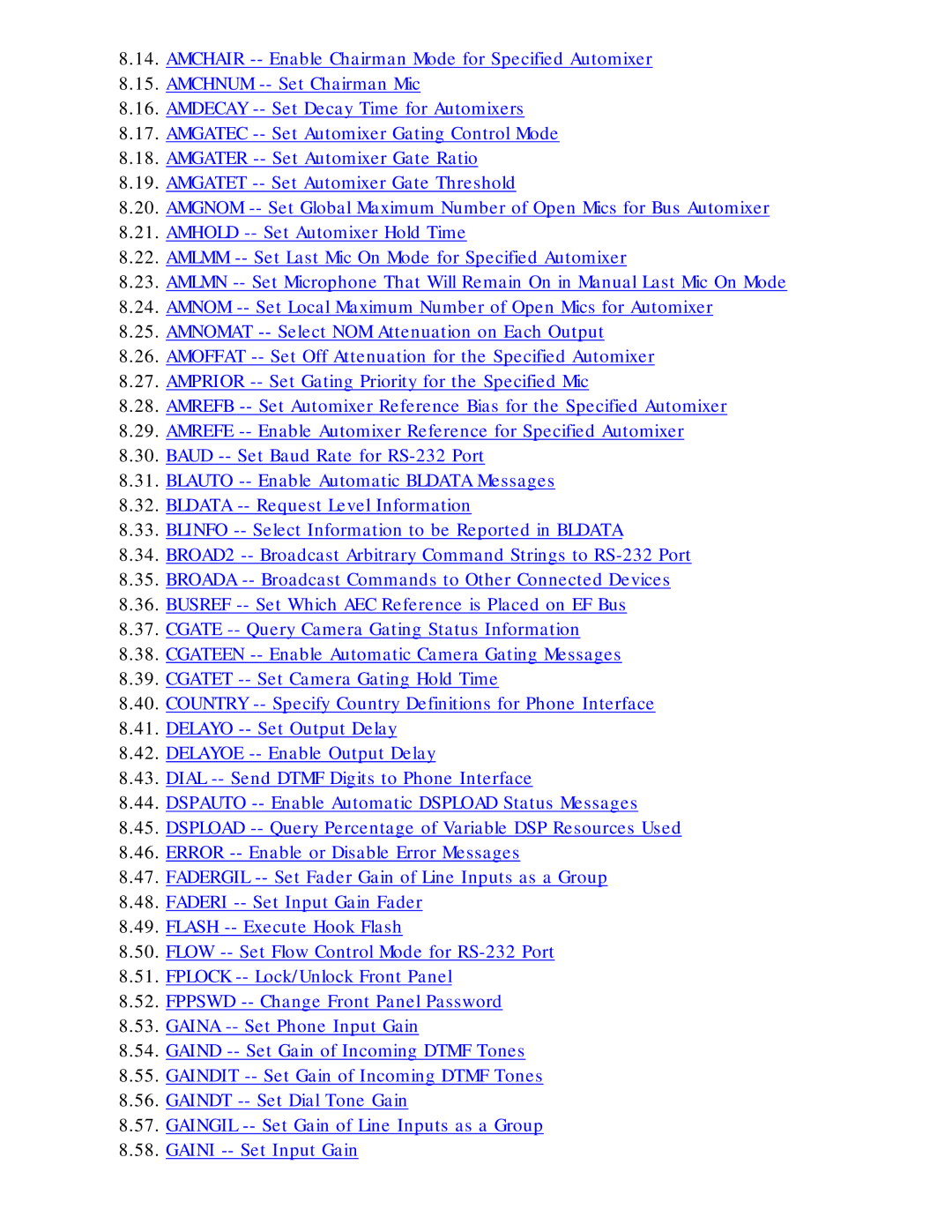RS-232 specifications
Polycom RS-232 is a key interface utilized in various communication and audiovisual systems, enabling effective integration between different devices. This technology employs a standard serial communication protocol that allows for robust control and communication, particularly in environments that require sophisticated audiovisual setups.One of the main features of Polycom RS-232 is its ability to facilitate point-to-point communication over distances of up to 50 feet without the need for a repeater. This long-range connectivity is essential in large conference rooms and auditoriums where devices are often spread out over considerable distances. The serial connection is often more reliable than wireless options, which can be susceptible to interference.
Another notable characteristic is its versatile compatibility with a range of devices, including cameras, projectors, and interface panels. This allows users to control multiple devices from a single point, streamlining the operation of complex setups. The straightforward nature of RS-232 commands simplifies integration, which is a significant benefit for both installers and end-users.
Polycom RS-232 also supports various baud rates, giving users the flexibility to optimize communication speed based on their requirements. This adaptability ensures that users can achieve the desired performance, whether they are managing basic functions like power and volume control or more complex commands for switching video sources or adjusting settings.
The technology also features error-checking capabilities, which contribute to its reliability in communication. This reduces the likelihood of issues during operations, ensuring that commands are correctly received and executed. Additionally, its structured protocol aids in diagnosing and troubleshooting, making it easier to manage any issues that arise.
With its robust nature and proven reliability, Polycom RS-232 remains a pivotal technology in the realm of audiovisual communications. Its combination of long-range capabilities, compatibility, flexibility, and reliability makes it an essential tool for enhancing the efficiency of modern communication environments. As technology continues to evolve, the importance of dependable interfaces like Polycom RS-232 cannot be overstated, ensuring seamless integration and operation of sophisticated communication systems. Whether used in educational institutions, corporate environments, or event venues, Polycom RS-232 guarantees a streamlined experience in device management and control.
